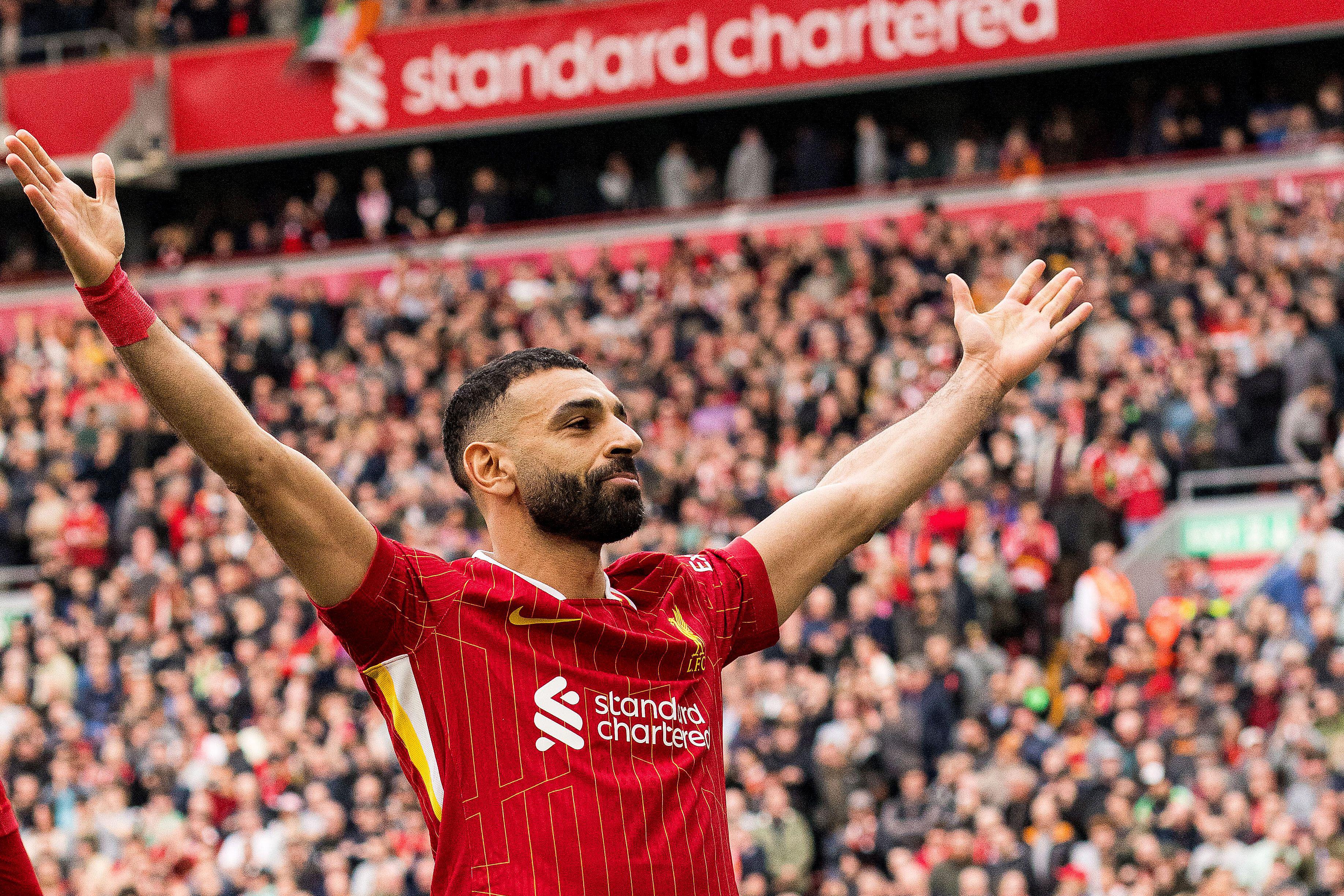Major Indoor Soccer: the hype of America's one-time biggest league remembered
With its American showmanship and (for some reason) Darth Vader, it was, for a small pocket of time, the USA’s biggest football competition. So amid all the dry ice and fireworks, why did such a revolutionary enterprise end in tears?
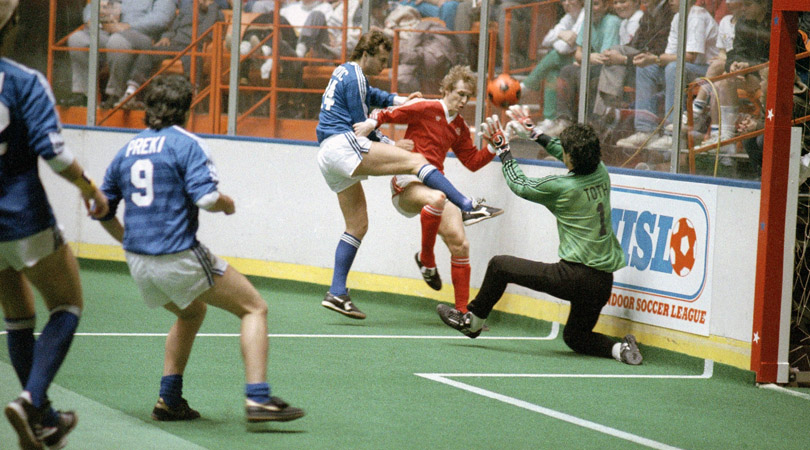
Andy Chapman, one of only two men to have enjoyed a professional indoor football career in the USA spanning four decades, is reflecting on the time that he knocked a cheerleader unconscious. “I was playing in St. Louis, and they used to go crazy with the razzmatazz – there’d be 18,000 people watching an indoor football match in the 1980s, a bigger crowd than some English First Division sides got,” he tells FourFourTwo in a cockney accent that hasn’t been dimmed by 35 years Stateside.
“There were fireworks and dry ice, and the cheerleaders would kneel down to welcome us onto the pitch. You couldn’t see a frigging thing, and as I trotted out I accidentally kneed this poor girl in the temple. She was spark out and had to be carried off. On another occasion, when I was with Baltimore Blast, the players would emerge from a replica of a spaceship that got lowered down, and the crowd would go berserk. For a lad from a council house in the East End, it was barely believable.”
However, when discussing the Major Indoor Soccer League (MISL), which ran from 1978 to 1990 in its most recognisable format, very little is believable. Americans have always been mocked by snooty European purists for their meddling with the beautiful game, and the MISL is surely the most unashamed example in history. A turbocharged version of six-a-side, it featured such wonderfully named sides as the Cincinnati Kids, San Francisco Fog and Minnesota Strikers, playing in lurid strips in front of rabid crowds.
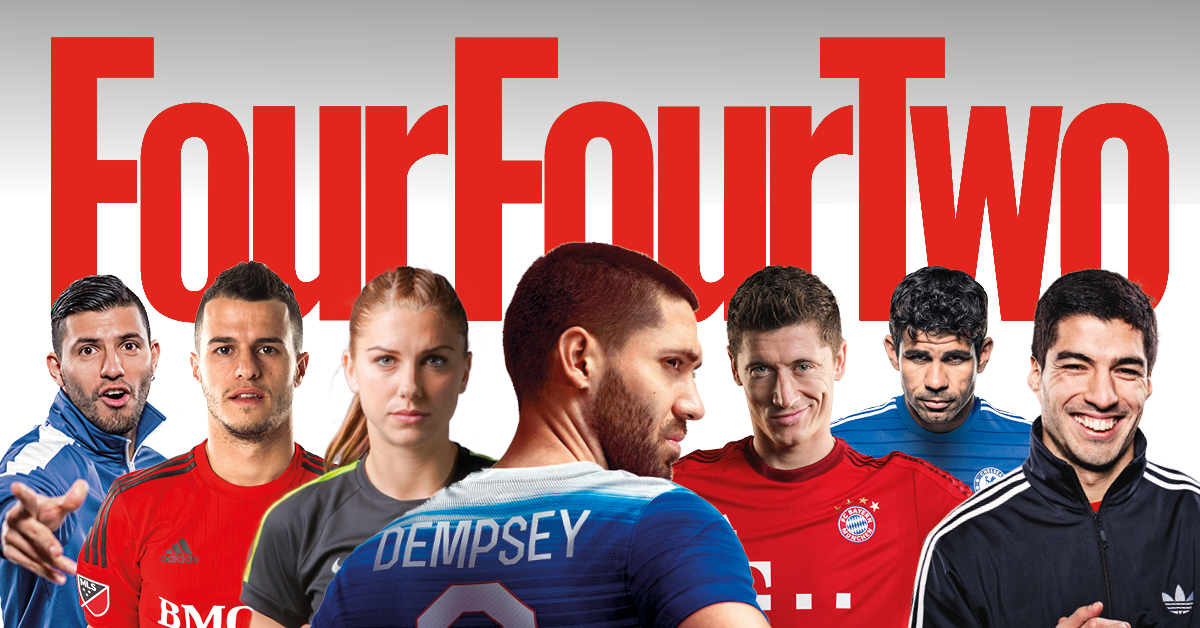
Most astonishingly, at one point in the fluorescent wonderland that was the mid-’80s, the MISL actually became the foremost football league in America – and in some areas the much-maligned sport of soccer even began to overtake the popularity of big-hitters like basketball. Acting as a bridge between the NASL of Pele and the USA World Cup bid, its importance should not be understated. At the same time, however, the whole thing was so crackers as to be almost beyond parody.
So how did it come about, and why did it end as dramatically as it exploded into life? FFT grabbed its pom-poms, short shorts and disco ball to delve deeper…
“The fans kept cheering – the players had to come back for a curtain call”
The American obsession with stats was also catered for: players were precisely graded with points for goals and assists. It worked. Supporters weaned on the all-action scoring of basketball preferred it to the ‘boring’ one-nils of the NASL, and flocked to watch.
The MISL was devised in 1977 by Ed Tepper, a free-thinking real estate mogul who had dabbled in professional lacrosse. The NASL was on the wane, with franchises struggling to draw crowds (it eventually perished in 1985). Tepper realised that ‘real’ football simply didn’t appeal to the average American Joe.
Get FourFourTwo Newsletter
The best features, fun and footballing quizzes, straight to your inbox every week.
“It’s not the world’s most popular game, soccer, that we will be playing indoors,” said Tepper, who became the league’s Deputy Commissioner. “It is athletic showbusiness.” He arranged a tour with a Russian XI facing off against six American sides. The popularity of these indoor showcases – with beer, burgers and central heating – convinced Tepper it would work; he set about mustering teams to compete in a 1978/79 winter season.
His sidekick, MISL Commissioner Earl Foreman, who part-owned the NFL’s Philadelphia Eagles and had been instrumental in the formation of the NASL, shared Tepper’s vision. “What we’ve done is capture the artistry of the outdoor game and added American flavour,” he said. “There’s high scoring and time-outs. It’s broken into four 15-minute periods. We have body contact and the rules are simple. Anyone can enjoy it.”
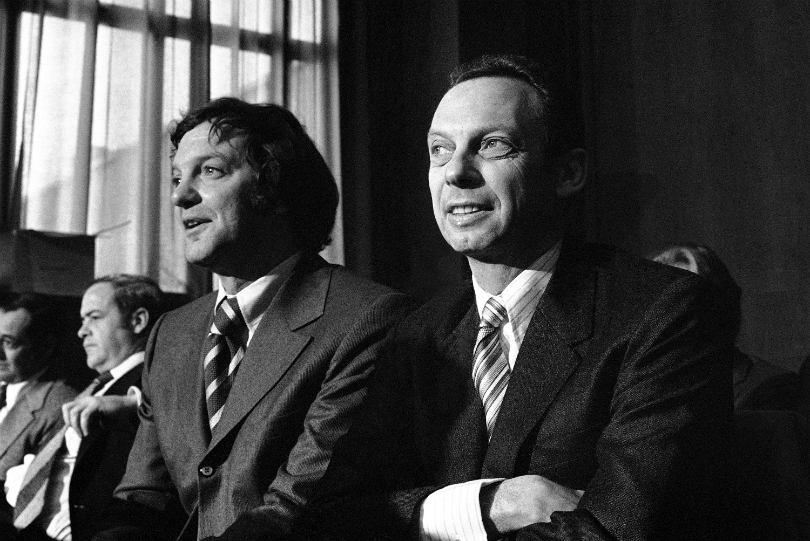
Tepper and Foreman sold six initial franchises for $25,000: Cincinnati, New York, Philadelphia, Pittsburgh, Cleveland and Houston. A year later, five more clubs were added with a 32-match season (Buffalo, Hartford, St. Louis, Detroit and Wichita came in), and the NASL got interested, with its summer sides playing indoors over winter. “It’s a natural complement to the summer season,” said NASL Commissioner Phil Woosnam. “Most owners can now see its potential. The spirit of the game is right for the times.”
Played on artificial turf in ice hockey arenas with teams of six, 12ft-by-6ft nets, a hi-vis orange ball and rebounds off the hockey boards, this was the Americanisation of football taken to its logical conclusion. Games would produce 10 to 20 goals; one 1980 match saw a record 165 shots on target. The American obsession with stats was also catered for: players were precisely graded with points for goals and assists. It worked. Supporters weaned on the all-action scoring of basketball preferred it to the ‘boring’ one-nils of the NASL, and flocked to watch.
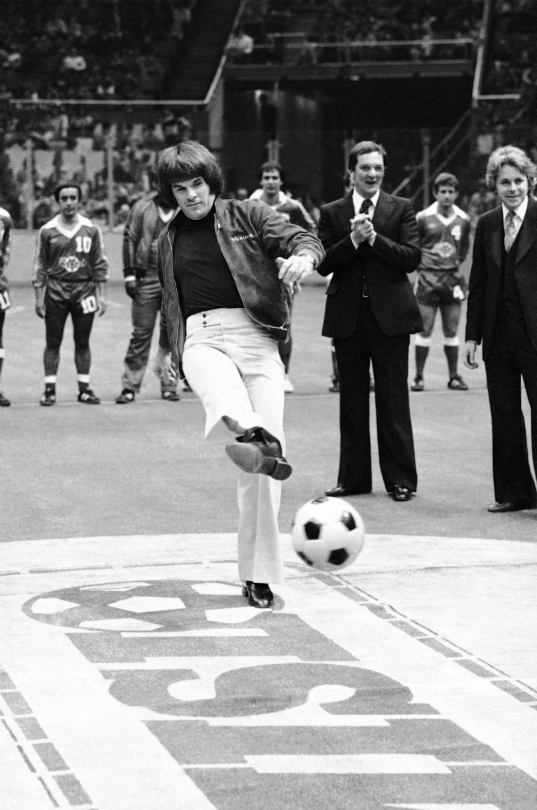
In some places – especially Midwest towns without a hockey or basketball franchise – the MISL got bigger crowds than top-level basketball. Attendances could touch 20,000, and averaged 7,644 across the States.
“I was never a soccer fan until I started going to Baltimore Blast in ’82,” remembers Sydney Nusinov, who edited an MISL fanzine and now runs the Indoor Soccer Hall of Fame. “It was the antithesis of outdoor soccer. The fan intensity was incredible. I remember the Blast winning a play-off: they did their victory lap and went to the locker room, but the fans kept cheering. They had to come back for a curtain call. I’ve never seen anything like it.”
There's a first for everything
Zungul’s numbers were head and shoulders above anyone else. He had two 100-plus-goal seasons. He once scored three goals in 36 seconds!
The MISL was also trailblazing in its use of entertainment. It was the first American sport to dramatically introduce the line-ups, and the first to play music during games.
“We knew we had to be different,” says Tepper. “We weren’t the NFL, with real history. We were entertainment, and we could make our own production.”
The New York Arrows dominated the league’s early years, winning four straight titles thanks largely to the exploits of communist defector Slavisa ‘Steve’ Zungul. The former Hajduk Split forward and Yugoslavia international had been rated by his coaches back home to be as talented as Gerd Muller. His eloping to the USA caused a national scandal: Zungul was granted permission to travel to the Big Apple with his Playboy model girlfriend Moni Kovacic, and never came back.

Indoor lord Zungul heads in another
The Yugoslavian FA branded him “a traitor, a deserter and a drunk” and pressured FIFA to ban him from their affiliated leagues, so the MISL became his only option. It was America’s gain: Zungul was soon known as ‘The Lord of All Indoors’. He drove a Rolls-Royce around Manhattan wearing a cowboy hat, and the Arrows fans dubbed him ‘Disco Steve’. He was also something of a philosopher.
“How I score goals, I cannot tell you – it happens in a dream,” he once mused. “But why is easy. It hurts me physically to be defeated. The goal-getter must be a con man, a thief, a clown, a magician. And you must think hard. When the game is over, it’s not your body that should be tired, but your brain.”
Zungul remained a frustrated ‘proper’ player, however. “Indoors is OK,” he said. “But the outdoor game is what I love.”
His outstanding control, though, made him ideal for the miniaturised mayhem, and Zungul was a six-time MVP, also playing for the Tacoma Stars and the San Diego Sockers. The Sockers, coached by Ron Newman, who had previously played for Portsmouth and Gillingham, eventually became the MISL’s equivalent of the Yankees, winning eight titles. The promotional rap video they produced – including Newman spitting rhymes in a broad Hampshire accent – is YouTube gold.
“Steve Zungul was our Wayne Gretzky,” Nusinov tells FFT. “The Arrows were the first dynasty, and when they disbanded, a lot of their players ended up at San Diego. In all, the Arrows and Sockers won 12 of 14 MISL championships. Zungul’s numbers were head and shoulders above anyone else. He had two 100-plus-goal seasons. He once scored three goals in 36 seconds! The only play-off series the Sockers lost was to the Tacoma Stars, who signed Zungul away from San Diego.”
The MISL’s peak was probably the ’87 championship series between the Dallas Sidekicks and Tacoma Stars: Dallas were led by Brazilian Tatu, Tacoma by Zungul. The series went to seven games – all sold out. In game seven, with 21,728 fans present, the Stars lost in overtime.
Londoner Andy Chapman, who ranked eighth in the MISL all-time scoring table, shared Zungul’s skill set. A former Arsenal squad member under Bertie Mee, he’d gone to America on a whim. “I was playing in the reserves, and back then Malcolm Macdonald, who had joined Arsenal for a British transfer record, was only making £200 a week. This American fella, Derek Lawther, collared me after training and said: ‘Come to the USA. I’ll give you £100 a week tax free, a car and an apartment.’ I was only 20 years old! I bit his hand off.”
Indoors, skill trumped fitness. “It suited me, because I was a finesse player,” says Chapman, who initially played for Wichita Wings and currently runs a youth side in Birmingham, Michigan. “I’d always loved five-a-side, and would have done OK at Arsenal these days, but back then there was a big ‘kick the f**k out of it’ element to English football. The MISL appealed because it was on a fast surface. Awareness and vision were most important. And the atmosphere – singing God Bless America – gave me goosebumps.”
Craig Allen, a Guernsey-born player who scored 275 goals in 254 indoor games for Cleveland Force, loved the league just as much.
“It’s a better game to play than outdoors,” he tells FFT. “You’d play flat out for two minutes, then get subbed for two. It was manic. The fans were right in your face behind the hockey boards, and they were crazy. We had beer cans and golf balls thrown at us in Baltimore – they hated Cleveland – and occasionally a player would fight a fan.
“In Wichita, you’d have 20,000 maniacs dressed in orange. The noise was unbelievable. I went to the 1986 FA Cup Final between Liverpool and Everton, and it was only half the volume of the MISL. I loved it.”
It is just a game
“A diet to Stan is cutting down from a 14-inch pizza to a 12-inch,” said his coach, and Baltimore Blast once ran a contest to win a meal with him. He eventually retired to run a pizza parlour in Uzice.
It was the American players who benefited most, though. Sixteen-man squads had to include 12 homegrown players – many of them local boys who couldn’t get a start in the foreigner-filled NASL. “People wanted to see their own kids playing,” said Foreman. “We wanted to be the league where no American would wind up holding Franz Beckenbauer’s warm-up jacket.”
European huffiness meant that many stars were reluctant to get involved, anyway. “When you see those terrible misfires going into the net, it hurts,” said the German Hubert Vogelsinger, a short-lived coach for the Hartford Hellions. “The whole game’s an accident.”
Even those who adored it recognised the MISL’s eccentricities. “Someone crazy must have invented this sport,” said goalkeeper Bob Rigby. “It’s a zoo, a circus. I can’t believe anybody takes it seriously, but they do. It’s human pinball.”
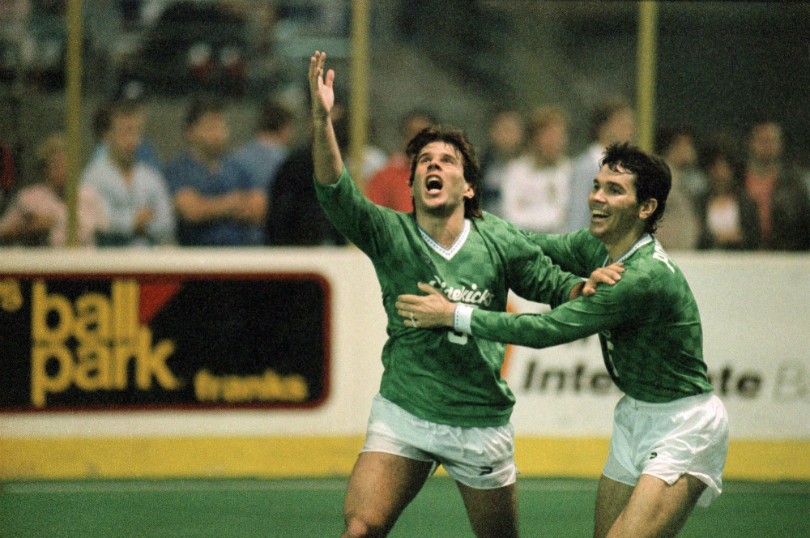
But the supporters lapped it up – and it would take a grump not to revel in the OTT showmanship. Cleveland Force were led onto the pitch every match by Darth Vader. “They’d dim the lights, play the Star Wars music and he’d lumber out,” says Craig Allen. “It was terrifying for the kids.”
Disco tunes and flashing lights accompanied the action, giant mascots threw frisbees, and female fans were actively wooed, often making up 50 per cent of the crowds. “We found out that women like to see the male athletic body,” said Denver Avalanche chairman Ron Maierhofer. Doug Verb, a former MISL official, tells FFT: “Instead of the freakish 7ft giants of basketball, they were looking at fit young guys running around in underwear.”
The Denver Avalanche’s players, resplendent in neon citrus, would run out and present red roses to attractive ladies in the crowd, and post-game there would be discos with the players that drew 1,000 punters a pop. Cologne companies ran votes on the most attractive competitors – some of whom would oil up their legs to give them a sexy glisten when playing – and one radio advert announced: “Hot legs, hot time, hot action – just too hot to handle! The Pittsburgh Spirit: we have 20 guys in shorts who can go all night.”
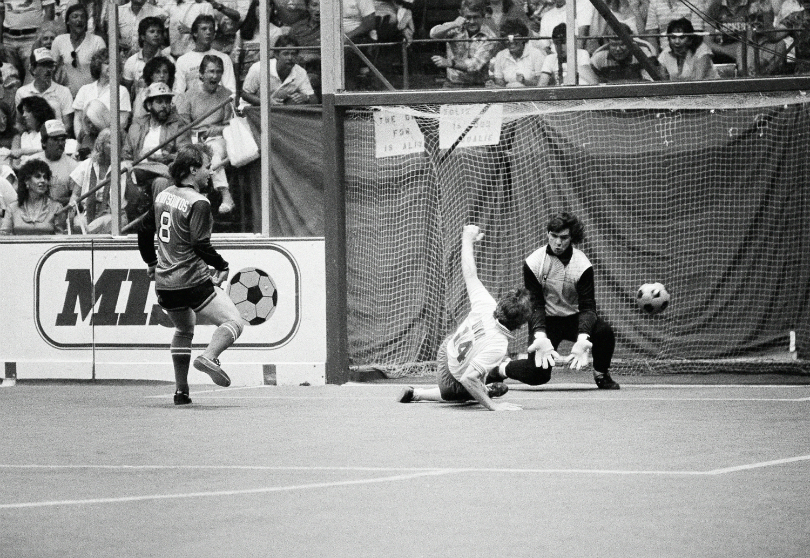
The league was chock-full of marketable characters. One of its very finest sphere manipulators was former Red Star Belgrade ace Srboljub ‘Stan’ Stamenkovic. The Yugoslav was nicknamed ‘The Magician’ for his quick feet and ‘The Human Soccer Ball’ for his 16-stone frame. “A diet to Stan is cutting down from a 14-inch pizza to a 12-inch,” said his coach, and Baltimore Blast once ran a contest to win a meal with him. He eventually retired to run a pizza parlour in Uzice. Stan made the MISL All-Star team three times, and won the Pass Master prize for most assists twice.
At a time when European footballers were often on modest wages, the financial rewards of the MISL were also appealing. “I thrived,” says Chapman. “At 22 I was a superstar – a heart-throb! The MISL pioneered the kind of commercial things everyone does now: numbers on jerseys, music, DJs. We made appearances in shops, did commercials for Subaru, had Nike endorsements.
I was from a family with zero money, and back home I saw ex-England players driving cabs, on the bones of their arses
“I was from a family with zero money, and back home I saw ex-England players driving cabs, on the bones of their arses. At one point in the mid-’80s, Bryan Robson signed the most lucrative contract in English history: £60,000 a year. I had a $500,000 contract for four years with Wichita.”
Chapman even found himself playing against legends like Johan Neeskens and Eusebio. After his knee problems forced him to quit playing outside, the Black Pearl played six MISL matches before finally giving up for good.
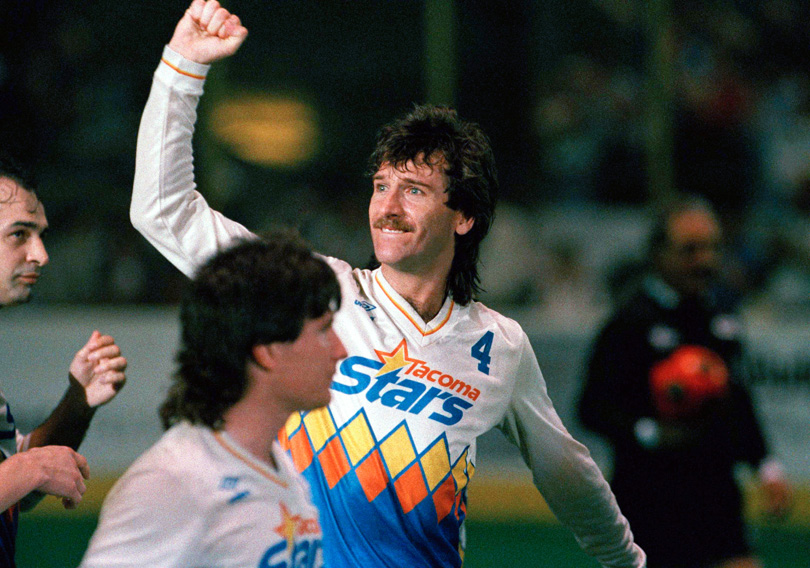
“He was with the Buffalo Stallions back in 1979,” remembers Chapman. “I thought: ‘F**k me, how’s he still going? Wasn’t he playing at the 1966 World Cup?’”
The end of the start
“We were dismissed as minor league jazz… then the NBA copied us”
The party, alas, was not to last. Despite the MISL dominating American soccer in the wake of the NASL’s death, television was to prove its undoing. Tepper had rightly noted that the MISL was “perfect for TV – you can see the whole field and regular timeouts sell razor blades.”
At its peak in the mid-’80s, with 14 teams, the league had a decent cable contract, reaching five million viewers in 47 states. But without prime-time action, it was at risk. Few franchises turned a profit. “We needed a salary cap,” says Verb. “Otherwise owners would spend money they didn’t have. But the owners wouldn’t go for it. It was crushing, and we were in a downward spiral. Eventually, I was fired with tears in my eyes.”
The defining moment came in 1984: with ESPN looking ready to pour huge sums into the league, they instead opted to invest in ill-fated NFL rival, the USFL. “It didn’t work out,” says Foreman. Finished off by the lack of a big deal, he retired in 1985. “I’d had enough.” Despite the launch of a popular Commodore 64 MISL computer game, the writing was on the wall. “The ’88 off-season was a bloodbath,” recalls Nusinov. “St. Louis, Cleveland, Minnesota and Chicago folded. It was just a matter of time.”
By 1989 the league was haemorrhaging franchises, and in 1990 it ceased to be.
The legacies of the MISL, however, were manifold. Indoor soccer as a sport didn’t perish – it merely changed shape. The Major Soccer League ran from 1990-92. When that ended, several franchises continued to operate, with Cleveland Crunch and Wichita Wings joining the National Professional Soccer League, a similar kind of caper that awarded goals either one, two or three points, depending on the distance from which they were scored. Disbanded in 2001, this later reformed as a second version of MISL; a third incarnation only wound up recently.
The MISL inspired the Arena Football League, which is still going to this day and averages similar crowds of 8,000, proving the popularity of short-form soccer to the American punter (there the Baltimore Blast and San Diego Sockers live on, alongside the likes of the Wichita B-52s and the St. Louis Ambush). Andy Chapman was persuaded to turn out for the Detroit Rockers in 2001 – more than 20 years after he’d arrived in America – to achieve his four-decade record.
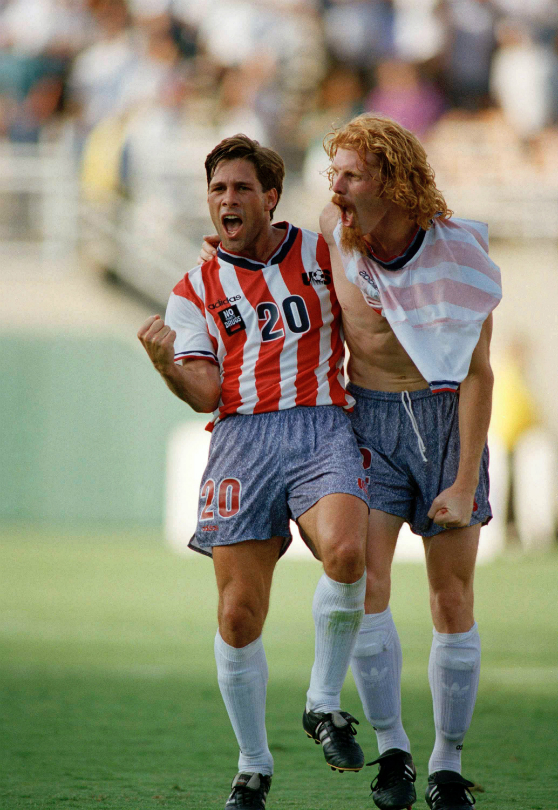
The MISL also played a bizarre role in the true watershed of football in America: hosting the 1994 World Cup. Earl Foreman helped to install Alan Rothenberg as president of the US Soccer Federation that would eventually win the prize. When FIFA asked the USSF to name a ‘Division 1 League’ representing America as part of their bid, the MISL, almost comically, was put forward. Somehow, a country with a six-a-side league as its primary outlet for the sport won rights to host the World Cup.
But, most of all, the much-mocked rocket ships and mascots changed American sport beyond recognition. “Our entertainment was condemned as minor league jazz,” recalls Foreman. “Then all of a sudden you watch the NBA All-Star Game and trace it all the way back. They copied the MISL.”
This feature originally appeared in the August 2015 issue of FourFourTwo magazine. Subscribe!
RECOMMENDED
- The legacy of USA 94: why two big misses didn't prevent a World Cup hit
- World Cup 1994: Interviews, features and more
More features every day on FFT.com
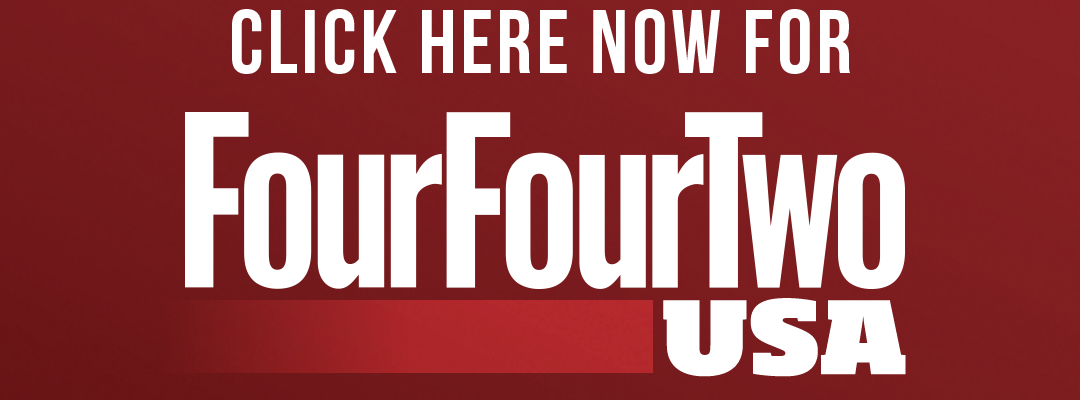
Nick Moore is a freelance journalist based on the Isle of Skye, Scotland. He wrote his first FourFourTwo feature in 2001 about Gerard Houllier's cup-treble-winning Liverpool side, and has continued to ink his witty words for the mag ever since. Nick has produced FFT's 'Ask A Silly Question' interview for 16 years, once getting Peter Crouch to confess that he dreams about being a dwarf.

